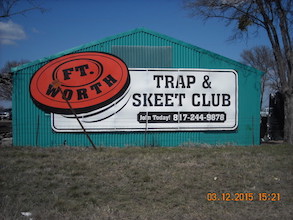|
BUNKER POLICY and OVERVIEW – FORT WORTH TRAP and SKEET
BUNKER TRAP OVERVIEW Olympic trap, also known as “International Trap” and “Bunker” has been a part of the Olympics since 1900. Squads of five to six shooters fire in rotation in rounds of 25 targets. Each shooter is presented with the same set of targets during the round, but in random order so the target’s flight cannot be anticipated. Targets emerge upon the shooter’s call from an underground bunker containing 15 throwing machines. One or two shots may be fired at each target. International Trap Field: An International Trap field is quite a bit different than the American trap field. As described above, there is a trap bunker which has 3 machines in front of each of the 5 shooting stations (International Trap is sometimes referred to as “Bunker” Trap). There is a sixth station that is used as a holding station as a full “squad” consists of 6 shooters. Shooters fire from approximately 16 yards from the traps. Shooters will see 2 R-to-L targets, 2 L-to-R targets, and one center target from each station thrown in a random order. After each shot shooters rotate stations from L to R. The 110mm targets are thrown much faster and farther than their American (108 mm) counterparts ( ~72 yards@ 65 mph compared to 50 yards@40 mph). Also, since there are 2 shots allowed at each target, Over/Under type shotguns seem to be preferred so that different chokes may be used for each shot. International Trap loads are normally restricted to 24.5grams (~7/8 oz.) of shot. Olympic Trap requires an underground structure that houses 15 non-oscillating trap machines. There are three machines at each of five stations that throw a right, center and left target from each station. These targets may be thrown at various heights with left and right angles that can be as much as 45 degrees from center. Targets are also required to travel approximately 76 meters (83 yards). The shooter is allowed two shots to hit the target.
|

